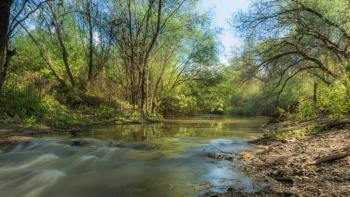
Nature as Infrastructure
We Care for Nature, So Nature Can Care for Everyone
Nature as defense
While the word “infrastructure” isn’t usually associated with beauty or inspiration, in the case of nature, it is both of those and more. The natural landscapes within and surrounding the Santa Clara Valley take care of us all in countless ways – provided we take care of them.
Here in Silicon Valley, the center of innovation, the Open Space Authority is demonstrating how strategic investments in conservation, smart land use policies and urban design can provide cost-effective, efficient nature-based resilience to climate change, while also providing many other ecological, economic and quality of life benefits – now and in the future.
Nature-Based Solutions Provide...
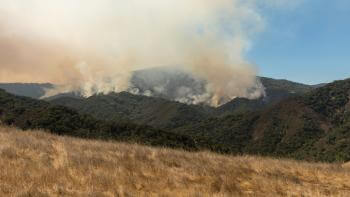
Wildfire buffers
Undeveloped but well-managed natural lands like hillsides, forests and even farms and ranchlands, serve as buffer zones that protect communities against wildfires.
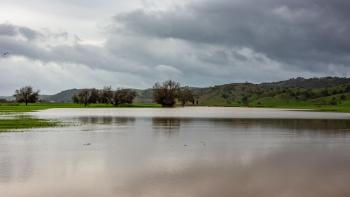
Flood prevention
Did you know that healthy floodplains work as sponges? Unpaved lands around waterways help absorb excess rainwater, which can prevent or slow downstream flooding in nearby cities.
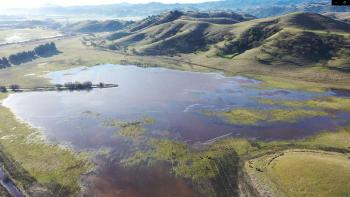
Safeguards in times of drought
Wetlands, floodplains, lakes and rivers provide communities with water, even during dry years, by recharging groundwater.
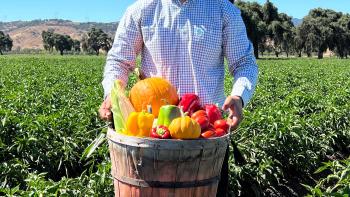
Food security
Climate-smart farming can increase the carbon stored in soils, keeping it out of the atmosphere and reducing the impact of greenhouse gases.
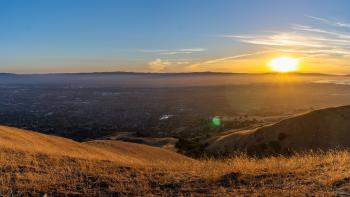
Protection against extreme weather
Protecting open spaces and keeping them healthy helps protect people and wildlife against the impacts of extreme weather and climate change. A great example of this is the cooling effect that trees and green spaces provide to nearby urban areas, helping combat extreme heat.
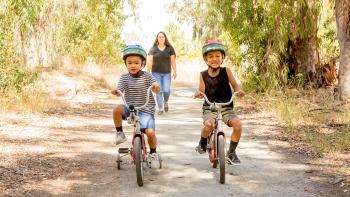
Healthy people
Protecting outdoor open spaces for public access and creating green spaces in urban areas creates more equitable access to nature.

Places for wildlife
Wildlife need healthy, connected landscapes for food, water, shelter and places to migrate, breed and raise their young. Protecting and restoring biodiversity, or the variety of life that exists within a habitat or ecosystem, is a crucial part of helping nature help us.
Climate Hope
How do we "build" natural infrastructure?
We don't need to. Nature is already doing its work for us. First, we need to protect it and then we can restore these landscapes to do more this important work.
Preserving irreplaceable landscapes like Coyote Valley from sprawl development means permanently protecting critical wildlife habitat, natural floodplains and water quality, supporting local agriculture and connecting people to nature. Restoring places like Coyote Valley multiplies investments to provide important ecosystem services for people and nature.
Read our brochure: Nature-Based Solutions to a Climate Smart Future
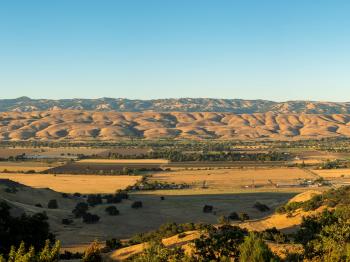
How We’re Investing in Nature
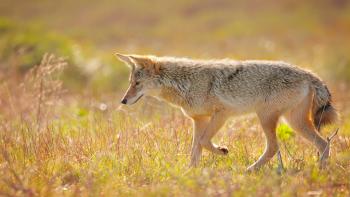
Habitat Protection and Restoration
Providing space for wildlife to move throughout their ranges and for plants to adapt in response to climate change is critical for building resilience in natural communities. It’s crucial that the over 1 million acres of core habitat in the Santa Cruz Mountains and in the Diablo Range stay connected through Coyote Valley, so wildlife can adapt to changing temperatures, water patterns and fire. Restoration of lands in Coyote Valley, like at Laguna Seca, the County’s largest freshwater wetland, will increase ecological resilience along the Pacific Flyway, one of the most threatened bird migration corridors in the Bay Area.
Farmland Protection
Protecting the economically and culturally important agricultural lands in Santa Clara County prevents their conversion to urban uses and the production of greenhouse gases. By serving as an agricultural greenbelt, these lands curb sprawl, thereby reducing automobile emissions, not to mention traffic. Agricultural lands sequester carbon in the soil’s organic matter when climate-smart management practices such as composting and low-till are applied. Preservation of farms and ranchlands also protects their contribution to the local economy, provides us with access to healthy food and guards us from food insecurity threatened by extreme weather such as drought, flooding and heat.
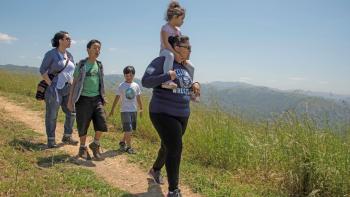
Public Access
Studies confirm that time spent in and around nature is good for all of us. It reduces stress, allows us to reconnect with family and friends, provides opportunities for physical activity and recreation and inspires awe. The Santa Clara Valley is fortunate to have a climate that allows for year-round enjoyment of the outdoors, such as by walking, hiking, riding bicycles, riding horseback and birdwatching. When we protect outdoor open spaces for public access – and help create green spaces in our urban areas – all of us can enjoy these health benefits more equitably.
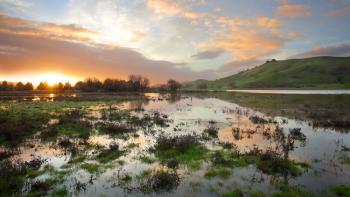
Watershed Restoration and Clean Water
Drought and flood have hit California hard. Water supplies and groundwater aquifers have been depleted. Floodplain restoration in Coyote Valley will help buffer San José from future extreme events by allowing water to spread over large, undeveloped areas upstream of urban development. In 2017, communities along Coyote Creek in San José experienced record flooding that caused $100 million in property damage. Climate projections indicate that we can expect more intense droughts and floods, extreme events to which our current built infrastructure cannot adequately respond. Nature as infrastructure is often more efficient, more resilient and less expensive than single-purpose built infrastructure.
“Nature-based solutions are actions that work with and enhance nature to help address societal challenges. This recognizes that healthy ecosystems provide benefits on which human well-being depends.”
Investing in Conservation for Our Future
With significant growth projected in Santa Clara County over the next 30 years, now is the time to plan our communities and landscapes to provide resilience in the face of these changes. We see a growing gap between the funding that has fueled our conservation successes to-date and what will be needed to sustain and protect Santa Clara Valley residents from more extreme weather events, biodiversity losses and development threats.
The Open Space Authority is considering placing a funding measure before voters in 2026. This would provide critical funding to protect, restore, maintain and manage a growing network of protected open space, wildlife habitat, water resources and agricultural lands in Santa Clara County. This work is essential to sustain the health of our communities and natural environment. We welcome your feedback on our future priorities!